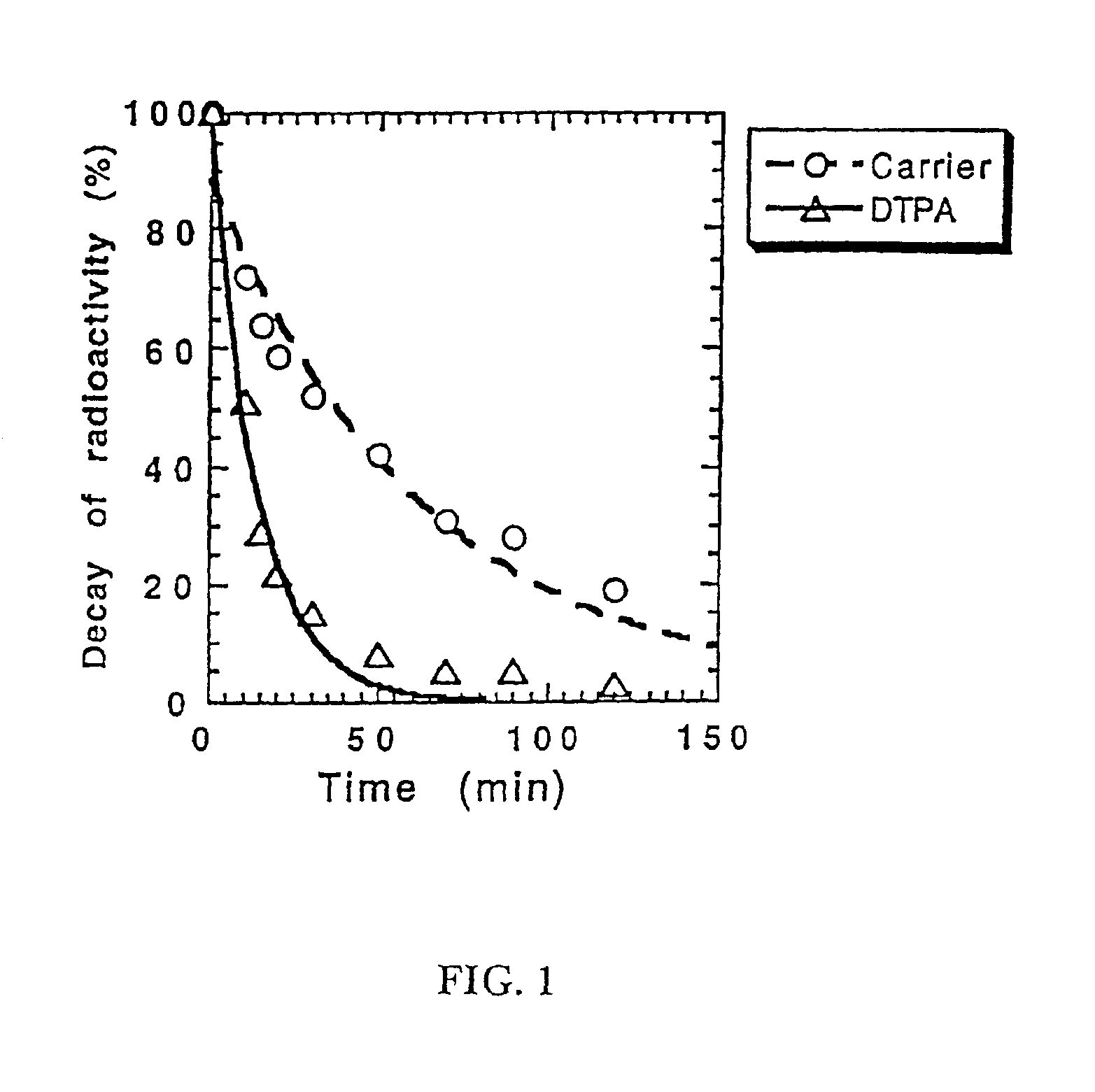Personal care formulations
a technology for applied in the field of new improved formulations, can solve the problems of lack of suitability of the carrier for its intended use, inability to carry a large amount of active agents, and suffers in the current availability of personal care and hygiene products formulations, etc., and achieves high load capacity and high adhesiveness. the effect of the active agen
- Summary
- Abstract
- Description
- Claims
- Application Information
AI Technical Summary
Benefits of technology
Problems solved by technology
Method used
Image
Examples
example 1
Chlorhexidine in Colloidal Composition Without Additional Surfactants
315 mg (˜0.4 mmol) of purified egg lecithin (E-80) and 115 mg (˜0.18 mmol) of chlorhexidine diacetate were dissolved together in 5 ml of ethyl alcohol while stirring to obtain a stock solution. The stock solution was diluted with distilled water during intensive stirring until 45 ml of water was added, such that the final concentration of ethyl alcohol was 10% to obtain a suspension. The suspension was further filtered through a microporous membrane filter of pore size 0.45 micron to form a stable suspension of uniformly sized particles. The mean particle size was 285±65 nm. About 50% of chlorhexidine was bound to lipid particles, as determined by centrifugal ultrafiltration. The absence of a liposomal fraction in the suspension was determined by NMR.
The high density of lecithin molecules on the particle surface should increase the opportunity for the amphiphilic phosphatidylcholine molecules to interact with polar...
example 2
Chlorhexidine Colloidal Formulation with Anionic Surfactant
580 mg (0.8 mmol) of lecithin (E-80), 250 mg of chlorhexidine diacetate (0.4 mmol) and 235 mg (0.8 mmol) of sodium lauryl sulfate (SLS) were dissolved in 4 ml of ethyl alcohol. After dilution with 96 ml of distilled water, the resultant suspension was filtered sequentially through membrane filters having a pore size of first 0.45 micron and then 0.22 micron. A stable suspension with particles of a size less than 200 nm was obtained. More than 70% of chlorhexidine was associated with the lipid phase. The antimicrobial activity of chlorhexidine in the prepared colloidal formulation was tested “in vitro” by diffusion in agar plates and by serial dilution. The activity was in the same range as the activity of chlorhexidine in solution.
example 3
Chlorhexidine Colloidal Formulation with Additional Non-ionic Surfactant
A formulation was prepared as in Example 2 with Lecithin E-80, but instead of sodium lauryl sulfate (SLS), 100 mg of polyoxyethylene sorbitan monooleate (Tween-80) was added to the alcohol solution. After dilution and filtration through a 0.22 micron membrane filter, a fine suspension was obtained, with a mean particle size of about 60 nm. About 50% of the total chlorhexidine was associated with lipid particles.
PUM
 Login to View More
Login to View More Abstract
Description
Claims
Application Information
 Login to View More
Login to View More - R&D
- Intellectual Property
- Life Sciences
- Materials
- Tech Scout
- Unparalleled Data Quality
- Higher Quality Content
- 60% Fewer Hallucinations
Browse by: Latest US Patents, China's latest patents, Technical Efficacy Thesaurus, Application Domain, Technology Topic, Popular Technical Reports.
© 2025 PatSnap. All rights reserved.Legal|Privacy policy|Modern Slavery Act Transparency Statement|Sitemap|About US| Contact US: help@patsnap.com

